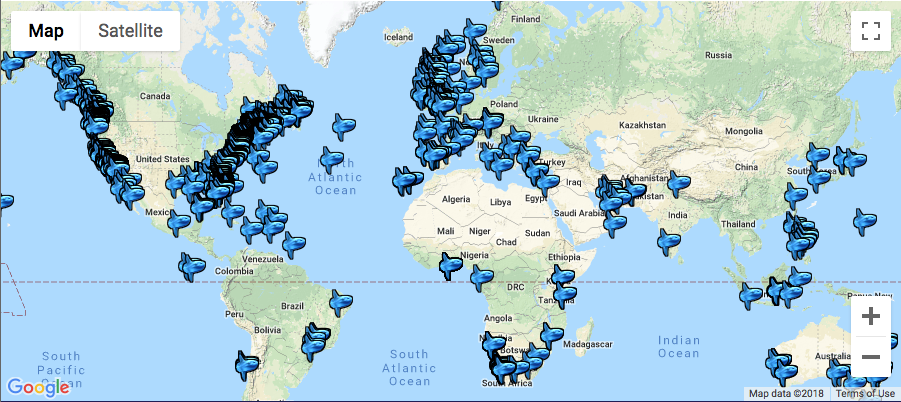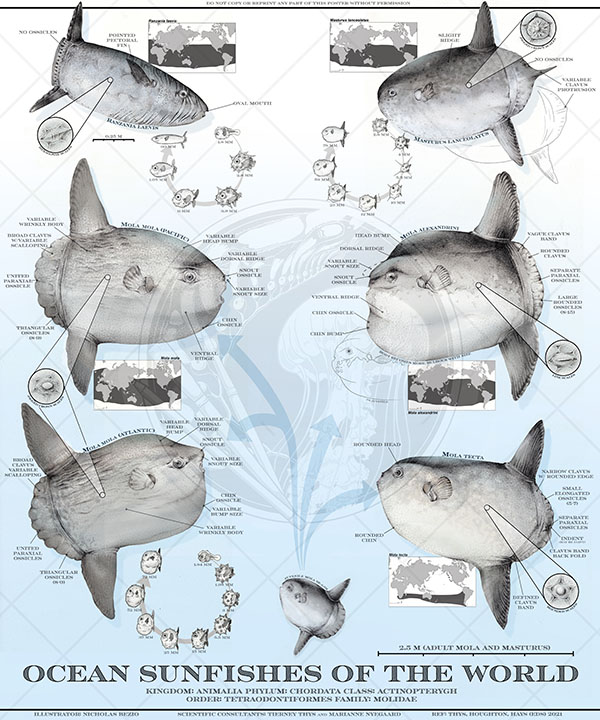Surprise sunfish species washes up on California shores
The ocean delivered an amazing surprise gift this past week in the form of a giant ocean sunfish species new to California waters, Mola tecta. How did this specimen get here? Did it bring friends or travel alone? Is this the first time it’s been here? Was it always here and just confused with a very similar species, Mola mola? These are all questions that started bubbling up in the fish community shortly after the news hit the wire on Feb 22 and the individual was identified via the fantastic citizen science app, INaturalist, folks in Santa Barbara and the expertise of Marianne Nyegaard who described this species recently from specimens gathered only from the Southern hemisphere.
The most common sunfish species in California waters is the Mola mola and very occasionally the slender mola, Ranzania laevis.
I have been studying this remarkable group of fishes with global team of collaborators since 2000 and run the website oceansunfish.org. From satellite tracking to exploring genetics, bycatch, morphology and ecotourism development, our knowledge of this group has continued to build. In fact, so many researchers are now working on Molidae and so many new discoveries are being made that together with my colleagues, Jonathan Houghton and Graeme Hays, we are co-editing the first academic book on the Molidae for CRC press with contributions from mola experts around the globe, due out in 2020.
When I first became interested in these curtailed colossi, very little was known about them. Mola mola was an obscure species, unknown to anyone outside the most obsessed ichthyologists. Now we know M. mola are active predators that engage in latitudinal migrations and travel up to 20 km a day. We know they can breach, dive to 1000m multiple times a day, tolerate temperatures from as low as 1.8˚C to higher than 22˚C and even perhaps tolerate low oxygen conditions. We know they school as youngsters and become loners as adults and house more parasites than you can shake a stick at. We know they can shift their diet depending on their age and size and go from eating benthic (seafloor dwelling) organisms to specializing more on pelagic (free-floating) jellies when they’re over 1m in total length. We know they can reach full size by 20 years of age and maybe live twice that long if not longer.
But this new arrival brings up even more questions. Is it an indication of a fast-changing ocean? No movement studies have been conducted on this species so we don’t know how closely it mirrors the movement and behaviors of other Molids that have been tagged and tracked.
One thing is for sure. There’s never a dull moment in the Molidae world these days!
https://www.npr.org/…/scientists-shocked-by-rare-giant-sunf…
2021 Ocean Sunfish Symposium
Held February 23, 2021, in celebration of The Ocean Sunfishes: Evolution, Biology and Conservation edited by Tierney Thys, Jonathan Houghton and Graeme Hays and published by CRC press, Taylor & Francis. Featuring lead authors from each chapter of the book, the symposium highlights historic milestones, key findings, recent discoveries and current research updates from around the world. View all the sessions: https://www.youtube.com/playlist?list=PLwKFsJZmdxpHihnyFnaqfuUVW9E78EqJC
Read detailed sightings of sunfish near you or contribute your own
The Ocean Sunfishes – Order Now
Evolution, Biology and Conservation
Edited by Tierney M. Thys (California Academy of
Sciences, USA), Graeme C. Hays (Deakin University,
Australia) and Jonathan D. R. Houghton (Queen’s
University, UK).
Help Unravel the Mystery of the Ocean Sunfish
Seen an ocean sunfish? You can help by reporting your sighting. Your sightings can help us understand the behaviors and movements of these amazing creatures…
Adopt a Sunfish
I’d like to tell you a story about a very special little girl who inspired the creation of the Adopt a Sunfish. Early in 2007, I was serving as a National Geographic expert on a …
Want to be a marine biologist? Check out the education and careers section
Want to make a difference? Click here for suggestions.




